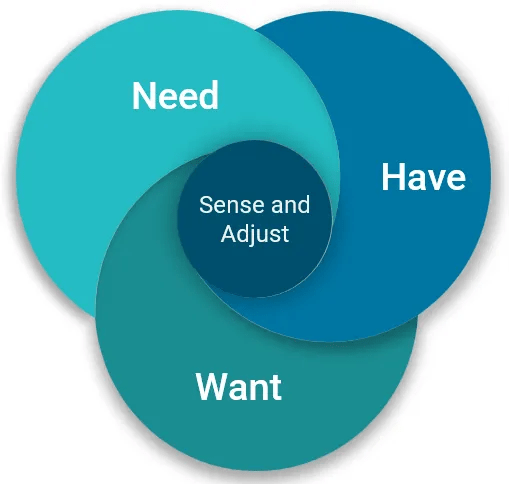ATD Blog
Content Intelligence — If Your Content Could Talk
Thu Dec 19 2024

Businesses are continuously tasked with delivering the “right content,” the “right format,” at the “right time and place” to remain relevant to their audiences.
The surrounding technology landscape is constantly evolving with new tools and capabilities that enable businesses to get more out of their content. This means that businesses need better control over their inventory of valuable content to utilize these tools to the fullest. This sparks the inevitable question: “What content do I have, don’t I have, or should I have?” (Shown in the following model.)

The key questions to help you get started with your content evaluation are:
What is the right content?
Which format do my consumers prefer?
Where are my consumers looking for content, and when?
Imagine your content became a data set combined with data sets from other systems and could provide you the answers! Content Intelligence is about talking to your content. More correctly, treating that content as data, as you would website usage or a customer’s purchase history. Connecting people with content today should be based on what we know about that person—their tenure, their role, industry, training they have completed, and more. Content should be a source of trends, intent, opinions, and so much more.
We should strive to live in a world where we can sense, predict, and react as quickly as the consumers of our content do. As content producers, this means continuously aligning with the business needs to influence our content inventory. These initiatives need to be driven by business impact. The higher the impact, the higher the importance and priority. This is where the power of artificial intelligence (AI) can make your content talk.
Hopping on the AI Bandwagon
AI is an accelerator that can help inform your decisions. Envision a scenario where the same content that assists a service technician in resolving that weird noise in your car’s air conditioner or aids a customer service representative in explaining the 20-page cell phone data plan can also be a source for derivative content such as FAQs, best practices, or even assessments. What if that content could be proactively delivered to the technician and CSR based on their tenure or experience level? Successful businesses treat their content as data, making it accessible to both human users and systems.
Using AI to understand content usage and audience interactions can create a window into insights for ongoing improvements. With a well-defined content strategy and a toolset, like MadCap Xyleme, that can power Content-as-a-Service, businesses can monitor, distribute, and analyze content across diverse platforms.
AI models perform optimally when supported by well-organized, richly tagged, and accessible data sources. For AI applications, content must be “AI-ready”—which includes chunking content, tagging it with metadata, and organizing it strategically.
Future-Proofing Content Strategy
As businesses continue to adopt AI, a flexible content architecture and thoughtfully designed ecosystem becomes essential. A central hub for managing, organizing, and connecting content systems with other applications in the content ecosystem provides a solid foundation that can adapt to emerging AI tools and the ever-evolving needs of consumers and businesses alike.
Conclusion: We’ve Just Started Talking
Content access and adaptability are crucial in today’s digital landscape. Businesses need to unlock the full potential of their content. By leveraging these capabilities, businesses are enhancing their current content strategy and establishing a resilient, future-proof foundation ready to adapt to new technologies, evolving user expectations, and the expanding role of AI in content management.

